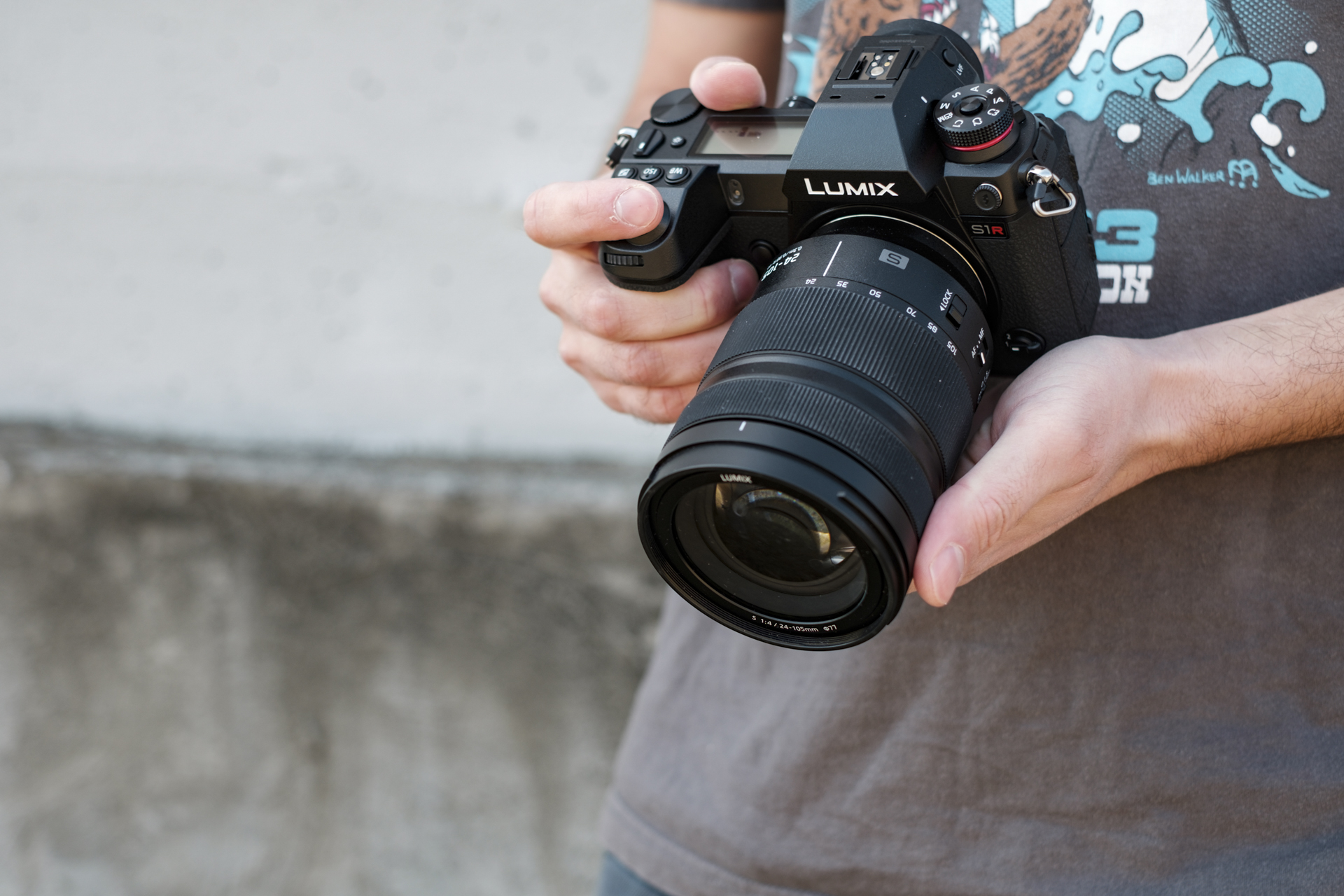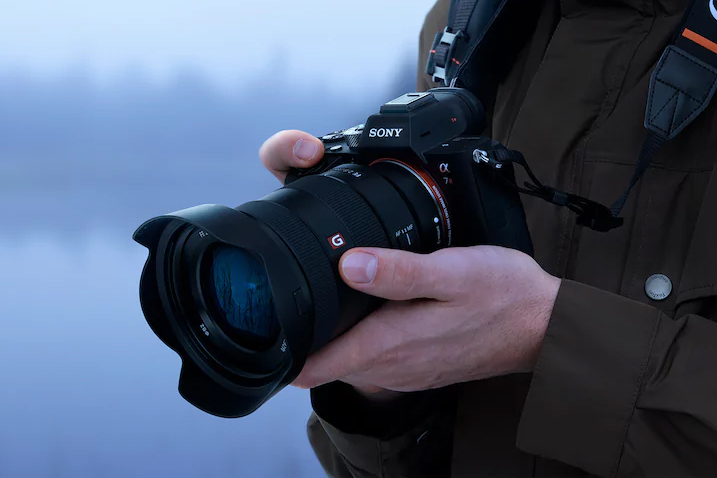We recently compared the new Panasonic Lumix S1R to the Nikon Z 7, but there’s another full-frame mirrorless camera in the 40-plus megapixel club that photographers should consider: the Sony A7R III. Despite being a couple of years old, the A7R III still holds it own against the Lumix S1R. These two models are quite different in design, but fairly similar in performance, and both offer pixel-shift modes that pull even more detail out of their already high-resolution sensors.
On paper, the Lumix S1R bests the Sony in some key areas, but it comes at a cost — a literal one. As the A7R III has gotten on in years, its price has dropped accordingly. You can now find it for about $2,800, $900 less than the S1R. So does the S1R earn its higher price? Here’s how these two cameras compare.
| Panasonic Lumix S1R
|
Sony A7R III
|
|
| Sensor | 47.3-megapixel full-frame sensor | 42-megapixel full-frame sensor |
| Burst speed | Up to 9 fps (6 with AF-C) | up to 10 fps (8 with live view) |
| Shutter speed | 1/8,000 to 60 sec. | 1/8,000 to 30 sec. |
| ISO | 100-25,600 (50-51,200 expanded) | 100-32,000 (50-102,400 expanded) |
| Autofocus | 225-point contrast-detection DFD AF | 399-point hybrid phase/contrast-detection AF |
| Image stabilization | 5-axis sensor-shift stabilization | 5-axis sensor-shift stabilization |
| Video | 4K at 30 fps, 8-bit, HLG | 4K at 30 fps, 8-bit, S-Log |
| Viewfinder | 0.78x magnification, 5.7m-dot OLED | 0.78x magnification, 3.69m-dot OLED |
| LCD | 3.2-inch, 2.1m-dot tilting touchscreen | 3-inch, 1.44m-dot tilting touchscreen |
| Connectivity | Wi-Fi, Bluetooth | Wi-Fi, Bluetooth |
| Battery | Li-ion rated at 360 shots | Li-ion rated at 650 shots |
| Dimensions (WxHxD) | 5.87 x 4.33 x 3.82 inches | 5 x 3.78 x 2.91 inches |
| Weight | 35.8 ounces | 23.2 ounces |
| Kit lens | Available body only or with 24-105mm f/4 | Available body only or with a 24-70mm f/4 |
| Price | $3,700 body-only | $3,200 body-only |
| Read more | Panasonic Lumix S1R review | Sony A7R III hands-on review |
| Buy now | B&H Photo | Walmart |
Sensor
Both cameras crest the 40-megapixel hill easily, but the Lumix S1R pushes well beyond it to just over 47MP, giving it a 5MP lead over the Sony A7R III. Is that a significant advantage? Not really, but it is something. The bigger difference comes in how the two cameras employ pixel-shift high-resolution modes, which use the sensor-shift stabilization systems to move the sensor by a pixels width in a box pattern, taking multiple exposures and combining them into one for a super-resolution photo.
The A7R III accomplishes this by taking just four images, enough to capture full RGB color data at every pixel location. This can dramatically reduce the chance of moiré, decrease noise, and bring out greater detail — especially in red and blue areas (read more about sensor color filters if you’re curious as to how this works). Unfortunately, the A7R III can’t combine those four exposures in-camera; you have to do it in post in Sony’s proprietary (and rather clunky) software (Tony Northrup has a nice video that walks you through the process).
The Lumix S1R takes pixel-shift a step further, by capturing eight exposures in total, enough to not only get full RGB data, but also to increase the pixel count to a staggering 187MP. You won’t find a full-frame camera that can capture more detail than that. What’s more, it combines the separate images in-camera into a single RAW file that you can open in Adobe Lightroom, Capture One, or any supported software.
High resolution mode isn’t everything, though. It requires a tripod and a non-moving subject, so the S1R doesn’t hold a big lead for handheld work, portraits, wildlife photos, etc. For landscape photographers, however, it really can’t be beat.
- 1. Shot on Lumix S1R
- 2. Shot on Sony A7R III
Both cameras perform admirably at high ISO, and while the Sony has the higher maximum ISO setting, real world performance is very similar. These are both excellent sensors, and you can’t go wrong either way, but the Lumix takes the win here for its higher quality and easier to use pixel-shift mode.
Winner: Lumix S1R
Speed
Both cameras are close in terms of burst rate, with the A7R III topping out at 10 frames per second and the Lumix S1R just 1 fps behind it. However, the A7R III loses live view at that speed, forcing you to 8 fps if you need it. The Lumix S1R has live view, but lacks continuous autofocus at 9 fps — you’ll need to drop to 6 fps if you require that. Keep in mind, neither of these cameras are advertised as sports photography machines in line with the Sony A9, but the Sony’s ability to continuously focus at 10 fps gives it the slight edge here.
Winner: Sony A7R III
Autofocus
The A7R III uses a 399-point phase-detection system that is both fast and accurate, including in continuous mode. The S1R uses a contrast-detection system, split into 225 zones.
Normally, contrast detection is much slower than phase detection, but Panasonic takes a different approach to it with its proprietary Depth from Defocus (DFD) technology. This dramatically improves performance, and in our experience, it was usually as fast as phase-detection systems. It doesn’t always work, however, and we did have occasional issues with focus hunting. Continuous autofocus is also not quite up to par with phase detection systems, although face and eye-detection worked very well. It’s also impressively good in low light, with sensitivity down to -6 EV.
For static subjects in still photography, the S1R is nearly perfect. For moving subjects and video, the A7R III has the more reliable autofocus
Winner: Sony A7R III
Design
The Lumix S1R is by far the heavier and larger of the two, weighing in at over 2 pounds with the battery loaded. But if you can get over the weight, it offers the most functional and complete control layout of any mirrorless camera we’ve ever tested; the A7R III looks sparse by comparison.
While both cameras claim environmental sealing, the S1R certainly feels like the more durable of the two. It also boasts the highest-resolution electronic viewfinder on the market, with 5.7 million pixels — 2 million more than the A7R III. The 3.2-inch, 2.1-million-dot screen is also larger and higher resolution than the Sony’s 3-inch, 1.44-million-dot screen.
Both cameras offer dual memory card slots, but where the A7R III uses SD cards for both, the S1R gives you one SD and one XQD. Not only are XQD cards faster than SD, but they are physically identical to even higher-speed CFexpress cards, support for which is coming to the S1R in a future firmware update.
Winner: Lumix S1R
Stabilization
Both cameras use 5-axis sensor-shift stabilization to counter camera motion when handholding, and both do a very good job in still and video modes. The A7R III’s stabilization is rated for 5.5 stops of shake reduction, where the S1R’s is good for 6 — or 6.5 when combined with an optically stabilized lens. It’s not a huge difference, but the Lumix takes another win here.
Winner: Lumix S1R
Video
Both Sony and Panasonic are well known as video companies. Sony was one of the first to put 4K into a mirrorless camera, and Panasonic’s GH series (built on the smaller Micro Four Thirds format) continues to present us with some of the best video cameras you can buy. But the Lumix S1R isn’t really targeting that same audience. In fact, even within the S series, the S1R falls behind the less-expensive Lumix S1 when it comes to video.
That’s not to say it isn’t capable; it can shoot 4K resolution at up to 60 fps, where the A7R III maxes out at 30. However, that’s really its only advantage, and all 4K video is recorded from a slightly cropped region of the sensor and without oversampling, so quality won’t stack up to some other cameras.
The A7R III can shoot both full-width 4K and oversampled Super 35 4K (which crops from an APS-C-sized area), giving you a choice between a wider perspective or maximum detail. It also incorporates Sony’s various picture profiles, including S-Log, a logarithmic tone curve that preserves greater dynamic range. Internal recording is still limited to 8-bit 4:2:0, so the A7R III isn’t the best video camera out there, but if you’re a still photographer who occasionally dabbles in video, it will deliver what you need.
Winner: Sony A7R III
Battery life
When it comes to battery life, mirrorless cameras suffer compared to their DSLR counterparts. Even with its huge, 3,050mAh battery, the Lumix S1R manages a paltry 360 shots per charge based on CIPA ratings. Keep in mind, it has to power a 5.7-million-pixel EVF, which likely draws a lot of power, so this may be a fair tradeoff. But the Sony will take you through some 650 photos before exhausting its battery, again based on CIPA ratings (real world performance may be much better for both cameras).
However, perhaps because its engineers realized how much power the S1R was going to consume, Panasonic built in a special Power Save Live View Finder (LVF) Shooting mode, which somewhat mimics how a DSLR manages power. In this mode, the camera will go to sleep after a short time, but will leave some functions active, like the EVF eye sensor and shutter button. Battery life is stated as over 1,000 exposures in this mode. We’re still calling this one in Sony’s favor, but whichever camera you choose, we recommend picking up a spare battery or two.
Winner: Sony A7R III
Lenses
Sony’s E-mount is part of a much more mature system than the Panasonic S series, and thus has quite a few more native lenses available at this time. However, the S1R is built around the Leica L mount, which already has a collection of lenses that are fully compatible (if expensive — they’re made by Leica, after all). Additionally, Sigma has also signed on to develop L-mount lenses, with 11 of their acclaimed Art-series lenses currently on the way. As of this moment, Sony is ahead — but things will look a lot different over the next twelve months. This one is too close to call, but it’s a good idea to check if a system has any particular lenses you want before buying into it.
Winner: Tie
Picking an overall winner
You may have noticed the R in both theses cameras’ product names; that means resolution. And when it comes to resolution, there’s simply no beating the Lumix S1R. Its 47MP sensor outclasses the Sony slightly for normal photography, but takes a giant leap forward in high resolution mode, offering 187MP, about four times the normal resolution. It is also the more durable and more professional of the two, with an absolutely gorgeous EVF and fantastic control layout.
But the Sony still comes out ahead in some areas, such as continuous shooting speed and video features. It also is significantly cheaper (especially with current instant rebates at the time of writing), meaning you can save some money to put toward a nice lens. If money is no object, we might lean slightly to the S1R, but it’s hard to argue that the A7R III doesn’t give you more value for your dollar.
Editors' Recommendations
- Smaller and cheaper, the full-frame Lumix S5 is exactly what Panasonic needed
- The Panasonic Lumix S5: Everything we know
- After years of waiting, Sony A7S III may arrive this summer
- What really determines your camera’s resolution? We asked an expert
- A9, A7R, S, II, or III? Making sense of Sony’s full-frame mirrorless cameras














